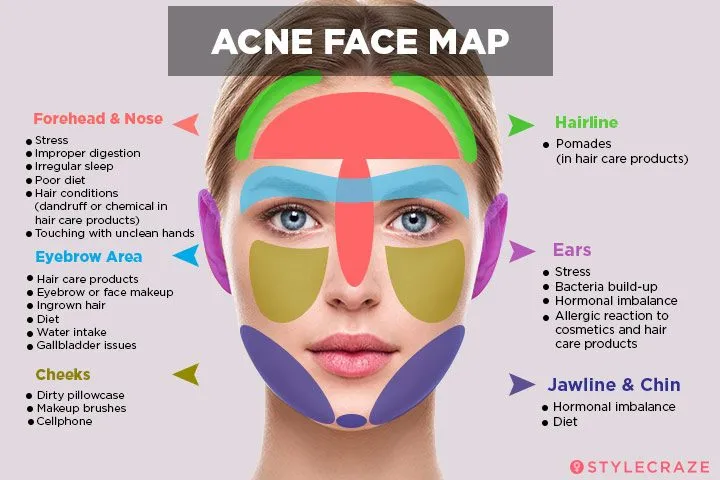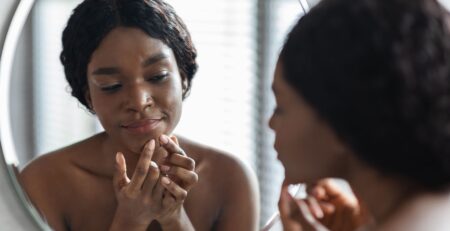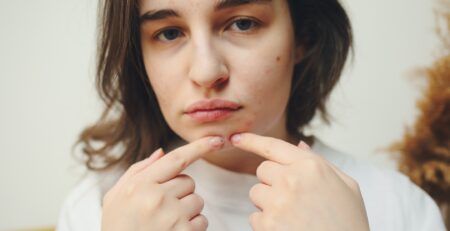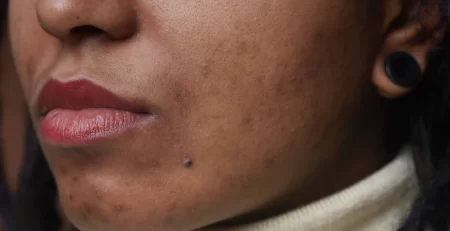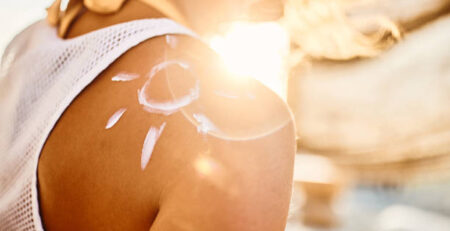What Is Acne Face Mapping?
Face mapping is an ancient medicinal technique that involves making connections between problems affecting someone’s face and that person’s overall health.
Some experts, including certain dermatologists, consider face mapping to be an approach that combines elements of Eastern and Western medicine philosophies. That’s because it takes into account various causes of skin/facial conditions, such as:
- Allergies
- Diet
- Stress levels
- Hormones
- Genetics
- Age
- Personality type/body constitution
Face mapping for acne is one of the most popular applications of this theory. The idea is that acne flare-ups that repeatedly develop on certain locations on the face, such as the chin or forehead, have specific causes.
Face mapping can also be used to help treat issues like redness, lines, puffiness and wrinkles.
BASIC MAPPING CHART THAT CAN BE USED TO HELP INDICATE UNDERLYING CAUSES OF SKIN PROBLEMS:
- BREAKOUTS BETWEEN/ABOVE YOUR EYEBROWS OR NOSE AREA
- LINES/WRINKLES BETWEEN YOUR EYEBROWS ON THE RIGHT SIDE
- LINES/WRINKLES ON THE LEFT SIDE OF YOUR EYES
- BREAKOUTS OR LINES ABOVE THE EYEBROWS
- PUFFINESS UNDER THE EYES
- ACNE ON THE CHIN, AROUND THE MOUTH AND ON THE JAW
- RED CHEEKS
- RED NOSE
- IRRITATION ON YOUR NECK
- BLEMISH ON YOUR FOREHEAD
WHAT CAUSES ACNE?
Acne is a widespread skin condition that many of us might recognize by its characteristic blemishes. It stems from an inflammation of the pilosebaceous unit—a component of our skin consisting of hair follicles and oil-producing glands. Although acne is most frequently seen on the face, it’s not restricted to that area. The upper arms, trunk, and back are some additional areas that can be affected.
Causes of Acne Breakouts
- Certain hair and skin care products: Some products can clog pores, leading to acne.
- Changes in hormones: Hormonal fluctuations, especially during puberty or pregnancy, can trigger breakouts.
- Diet: Some food aggravates acne n certain individuals.
- Genetics: If your parents had acne, you’re more likely to experience it too.
- Health conditions: Some underlying conditions can manifest as acne on the skin.
- Hygiene practices: Not cleaning the skin properly or too frequently with soaps and detergents may lead to breakouts.
- Irritation to the skin: Physical irritation from tight clothing, for instance, or rubbing can contribute to acne.
- Medications: Some drugs list acne as a side effect.
- Stress
Understanding the causes of acne can help you prevent and manage acne more effectively.
Acne face mapping believes that if you study where your breakouts appear, you can find the trigger. And once you know the trigger, you could put an end to your pimples.
This technique, just like the others, splits the face into zones that correspond with a particular medical or lifestyle issue. Here’s how it supposedly works.
Forehead
This is linked to stress and diet. Remedies for breakouts or recurring acne here include eating more fruit and vegetables, ensuring adequate sleep, and drinking plenty of water.
Hairline
Classed as a separate area, hairline problems relate to a buildup of hair or makeup products that include pore-clogging ingredients.
Breakouts caused by hair products is known as pomade acne. To fix, aestheticians recommend double cleansing skin and looking for noncomedogenic cosmetics.
Eyebrows
Between the brows is again related to diet. Breakouts can be caused by consuming too much alcohol or fatty or processed foods.
Cheeks
Your cheeks can be affected by outside influences such as air pollution and bacteria from the likes of pillowcases and cellphones. To combat, clean skin thoroughly and wash pillowcases regularly.
Diet is also believed to have an impact here
Chin
Your chin and jawline, as you may have gathered, is a mirror image of your hormonal balance. During menstruation and pregnancy, excess hormones can lead to breakouts.
Jawline acne can also be a sign of polycystic ovary syndrome, a condition where women produce higher amounts of ‘male’ hormones.
CONCLUSION
Some elements of face mapping can be useful to store in your memory banks, but others come with little to no evidence. Bottom line: Don’t look to the technique as the answer to all your skin problems. Instead, contact our dermatologist for the best possible advice.

